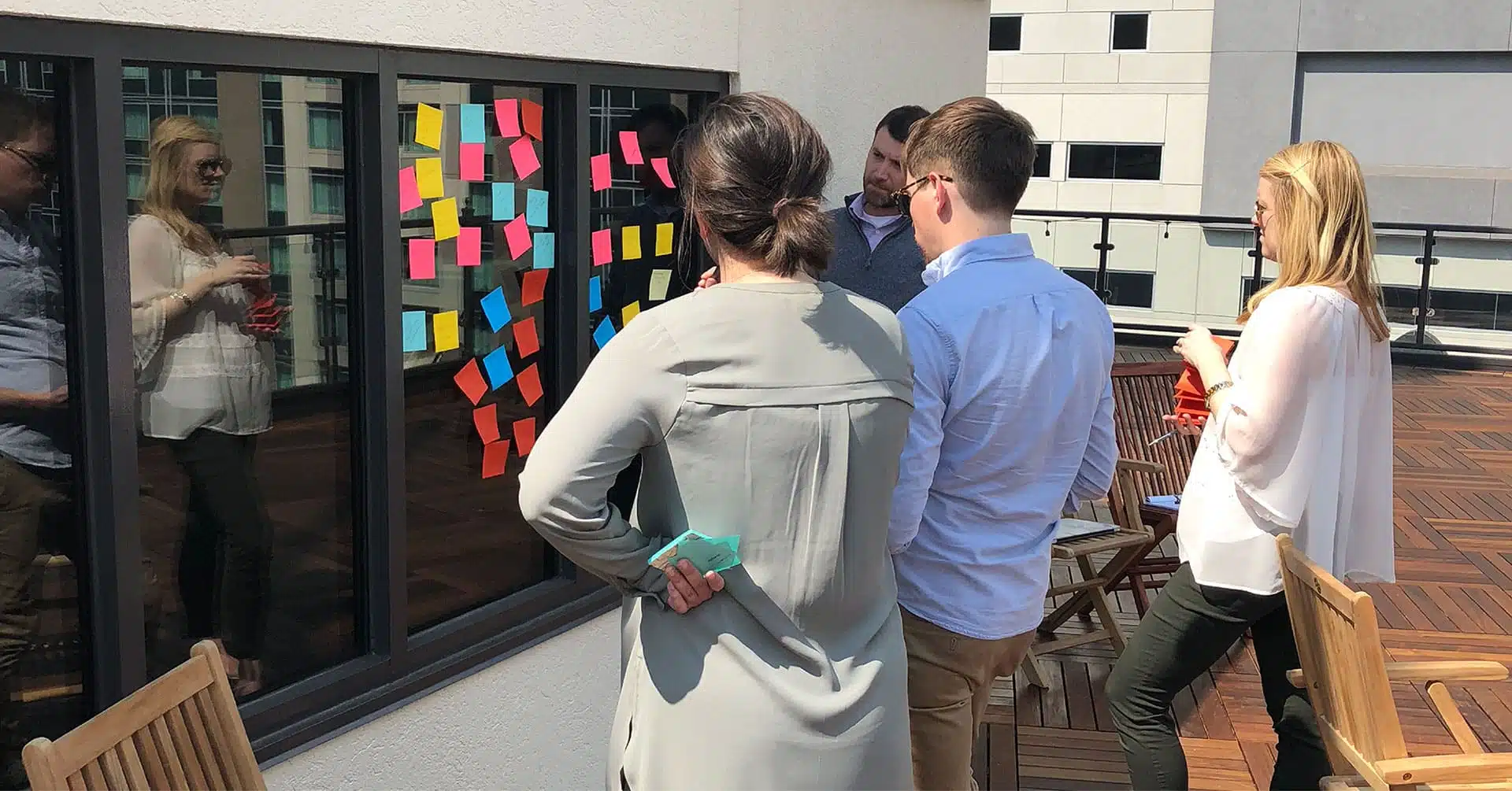Creative thinking allows us to find the ‘why’
Design has the power to accomplish amazing things. Create unbreakable bonds. Tell a story. Inspire feelings. Generate opinions. Solve problems.
No two problems are ever the same. Whether it’s the audience your client is speaking to, or the client itself — people are complicated and their opinions are always changing. To influence those opinions, it’s our job to get to the root of the problem, and this is often solved through audience or creative workshops — both of which are important and are often integral to one another.
Successful workshops are a more sophisticated way of asking why. It’s like taking a different route to your goal. You get to the same place, but you see different things along the way.
Audience workshops are your starting point because design influences people, just as people influence how we design.
Design influences people, just as people influence how we design.
Think of a person as an iceberg. Above the water are aspects of a person’s life that are easy to visualize. Their likes, their interests, where they live. Below the surface, it’s murky, harder to see. How they think and see the world, the reasons behind their decisions and why they feel that way. We can’t uncover those insights without diving deeper.
Creative workshops are a balance to that — taking what we’ve learned, expanding it in an artistic direction and putting it into execution.
- Start With Variety. We always view our relationships with clients as a partnership, which is why we strive to include them in our sessions, along with varying perspectives from the team so we can attack a problem from every angle. Their unique audience insights can turn a good idea into a transformative idea.
- Dream Big. Often, a client’s budget, timeline and past tried-and-true tactics are at the forefront, limiting its ability to see possibility. Use your workshop as a place to forget all of those very real constraints temporarily and focus on brainstorming incredible campaign ideas.
- Think Out Loud. It takes a level of vulnerability for a workshop to truly bring to light impactful solutions. Participation is key. Everyone in the room should feel comfortable to have an open mind and mouth. Workshops should feel as much like a discussion as a hands-on brainstorm.
- Put Audience First. This is about the people you serve — not your co-workers, boss or even your board. It’s a demonstration of empathy. Even when we’re starting a new brand from scratch, we learn from the people who are impacted by their service.
- Never Stop Playing Back. Even after the workshop is done, constantly revisiting keeps your strategy updated and aligned with what your audience’s needs are. New brands enter the market every day, allowing people to evolve quickly and decisively. It’s on us to make sure our clients keep up.
Design thinking is never linear, but it is constant. And, when it’s used along with traditional research methods, it’s a powerful weapon. It aligns your team with the client, ensures you’re adapting with your audience and puts your team in the perfect position to create work that matters.




